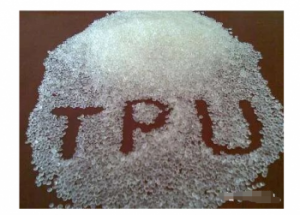Abstract
The present invention discloses a high solid polyurethane ink resin, a preparation method and its application. The resin is prepared by reacting raw materials containing the following mass components: compound polyol 28~ 46 parts, 3 to 15 parts of polyisocyanate, 2 to 9 parts of functional amine chain extender E, 0.1 to 13 parts of functional blocking agent T, and 30 to 60 parts of solvent. The polyurethane resin of the present invention still has lower viscosity and higher molecular weight when the solid content is above 45%, and the prepared ink has excellent leveling, adhesion fastness, and anti-adhesion properties. 
Wherein, the polymer polyol refers to polyester polyol or polyether polyol, and polyester polyol is a hydroxyl-terminated polyester compound generated by the condensation polymerization of diol and dibasic acid. Examples of the glycol include, but are not limited to, ethylene glycol, 1,2-propanediol, 1,3-propanediol, methylpropanediol, 1,3-butanediol, 1,4-butanediol, neopentyl glycol , 1,6-hexanediol, 3-methyl-1,5-pentanediol, 1,4-cyclohexyldiol, dihydroxydiphenylsulfone, 2,2-di(4-hydroxyphenyl)propane , at least any one of 4,4′-dihydroxydiphenylmethane; examples of the dibasic acid include but are not limited to sebacic acid, adipic acid, azelaic acid, terephthalic acid, isophthalic acid At least one of formic acid and phthalic acid. Preferably, the polyester polyol has a functionality of 2.

The polyether polyol refers to a compound starting from a hydroxyl compound and polymerizing alkylene oxide. Examples of hydroxyl compounds commonly used as initiators include but are not limited to ethylene glycol, diethylene glycol, 1 ,2-propylene glycol, 1,3-propylene glycol, dipropylene glycol, 1,2-butylene glycol, 1,3-butylene glycol, 1,4-butylene glycol, hexylene glycol, pentanediol, 3-methyl -1,5-pentanediol, 1,8-octanediol, 1,9-nonanediol, 1,12-dodecanediol, catechol, resorcinol, bisphenol F, bis At least any one of phenol A. Examples of alkylene oxides include, but are not limited to, at least any one of ethylene oxide, propylene oxide, and butylene oxide. The number average molecular weight of the polymer polyol is 400-6000, including but not limited to 800, 1500, 2000, 3000, 4000, 5000, preferably 1000-4000.
Among them, examples of the polyisocyanate include but are not limited to toluene diisocyanate (TDI), diphenylmethane diisocyanate (MDI), isophorone diisocyanate (IPDI), hexamethylene diisocyanate (HDI) ), dicyclohexylmethane diisocyanate (HMDI), naphthalene diisocyanate (NDI), terephthalene diisocyanate (PPDI), 1,4-cyclohexane diisocyanate (CHDI), xylylene diisocyanate (XDI) , cyclohexane dimethylene diisocyanate (HXDI), trimethyl-1,6-hexamethylene diisocyanate (TMHDI), tetramethylisoxylylene diisocyanate (TMXDI), norbornane At least any one of diisocyanate (NBDI), dimethylbiphenyl diisocyanate (TODI), and methylcyclohexyl diisocyanate (HTDI). Preferably, the polyisocyanate is one or more of toluene diisocyanate (TDI), isophorone diisocyanate (IPDI), hexamethylene diisocyanate (HDI), and dicyclohexylmethane diisocyanate (HMDI). kind.

In the synthesis of isocyanate prepolymer in step 3), the catalyst can be a catalyst commonly used in this field, examples of which include but are not limited to dimethyltin diacetate, dibutyltin dibutyrate.��Dibutyltin di(2-ethylhexanoate), dibutyltin dilaurate, dioctyltin dilaurate, zinc(II) dioctanoate, zirconium acetylacetonate, 2,2,6,6-tetramethyl- At least one of zirconium 3,5-heptanedioate and bismuth 2-ethylhexanoate; preferably dibutyltin dilaurate, bismuth neodecanoate, and bismuth 2-ethylhexanoate, and further preferably neodecanoic acid Bismuth and bismuth 2-ethylhexanoate.
Wherein, the solvent is selected from one or more of esters, secondary alcohols, and tertiary alcohol solvents; preferably ethyl acetate, n-propyl acetate, isopropyl acetate, n-butyl acetate, acetic acid One or more of isobutyl ester and isopropyl alcohol, more preferably one or more of ethyl acetate, n-propyl acetate and isopropyl alcohol. It should be noted that the specific types of solvents used in steps 2) and 3) can be the same or different, and their function is to dilute and dissolve, without affecting the implementation of the present invention.